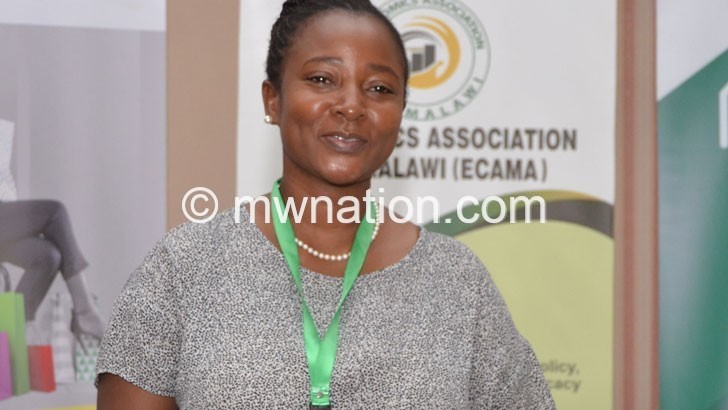IMF cancels K9bn debt
- Malawi relieved loan repayment till October
- Economist sees move easing pressure on forex
The International Monetary Fund (IMF) has given debt-burdened Malawi an $11 million (about K9 billion) debt relief by suspending debt repayment until October 2021 to free financial resources amid Covid-19 pandemic economic impact.

Malawi is among the beneficiary 28 poorest countries the IMF Executive Board on April 1 2021 considered to the Bretton Woods institution for cancellation of debt repayments under the Catastrophe Containment and Relief Trust (CCRT).
Through CCRT, the IMF provides grants for debt relief for the poorest and most vulnerable countries hit by catastrophic natural disasters or public health disasters. The relief is extended to free up additional resources to meet exceptional balance of payments needs created by the disasters and for containment and recovery.
In a written response yesterday, IMF resident representative for Malawi Farayi Gwenhamo said the third tranche Malawi has benefitted from totalled $238 million.
She said: “Since this is a debt service relief, the funds that will be released to Malawi under the CCRT will be directed towards debt service payments falling due to the IMF.”
Following the IMF decision, Gwenhamo said, the resources the Malawi Government would have used for this debt service “can be channelled to other needs”.
The latest approval is worth $238 million (about K186 billion) for all the 28 poorest countries and follows two prior tranches approved on April 13 2020 and October 2 2020. Malawi did not benefit from the previous tranches.
Ministry of Finance spokesperson Williams Banda yesterday confirmed the IMF debt relief, but asked for more time before commenting further.
The IMF is currently Malawi’s second largest external creditor after the World Bank through the International Development Association.
By December 2020, Malawi’s outstanding loans to IMF stood at $432
million (about K340 billion), a jump from $323 million (about K255 billion) as of June 2020.
The increase was attributed to a loan disbursement of $101.96 million (about K80 billion) under the IMF’s Rapid Credit Facility (RCF) approved last October to help the country cushion its economy from the effects of Covid-19 pandemic.
Overall, Malawi’s total public debt stands at K4.8 trillion or 54 percent of the rebased gross domestic product (GDP), an astronomical jump from a nominal debt of K131 billion or 30 percent of GDP in 2006 when the country had 90 percent of its $3 billion external debt written off under the Highly Indebted Poor Countries initiative.
Many local public debt relief campaigners, including Action Aid Malawi, have expressed concern over a huge chunk of resources the country is spending on interest payments yearly.
In the revised K2.3 trillion 2020/21 National Budget interest payments are projected at K376 billion, which is 5.3 percent of GDP and represents an increase of 43.8 percent from the 2019/20 preliminary outturn.
Such an allocation surpasses allocation to the agriculture sector at K354 billion, health sector at K205 billion, justice and security at K95 billion, social welfare at K92 billion and energy sector at K58 billion, according to an analysis by The Nation.
The breakdown is that foreign interest payments have been projected at K11.9 billion while domestic interest payments are pegged at K364.2 billion.
Reacting to the debt relief, local economist Milward Tobias said the move will help in reducing the current pressure on foreign exchange reserves while also strengthening the country’s balance of payment (BoP) position—a record of all transactions by Malawi with the rest of the world.
He said: “Debt relief grant means that a country that was to service debt has been forgiven some amount. A debt relief grant is the amount that would be used to service debt but has been forgiven and can use the money that otherwise would be used to service the debt, for other activities.
“It does not mean the economy has received new money and also that the saved resources, assuming there were resources to service the debt, can instead be used for other development priorities.”
Jubilee USA executive director Eric LeCompte, who worked on the creation of the debt relief mechanism of the IMF, is quoted by the international media as having said that “cancelling debt, for these vulnerable countries, means resources can be spent on health care and social services”.
Many developing countries’ economies, including that of Malawi, have struggled during the Covid-19 pandemic, given the lack of resources to handle such a crisis as compared to developed countries.
Subject to the availability of sufficient resources in the CCRT, the IMF said in a statement on Monday that debt service relief could be provided for the remaining period from October 16 2021 to April 13 2022 amounting to $964 million.
In March 2020, IMF managing director Kristalina Georgieva launched an urgent fundraising effort to raise $1.4 billion in grants for the CCRT.
The resources would enable the CCRT to provide financial assistance for relief on debt service for up to a maximum of two years, while leaving the CCRT adequately funded for future needs.






One Comment